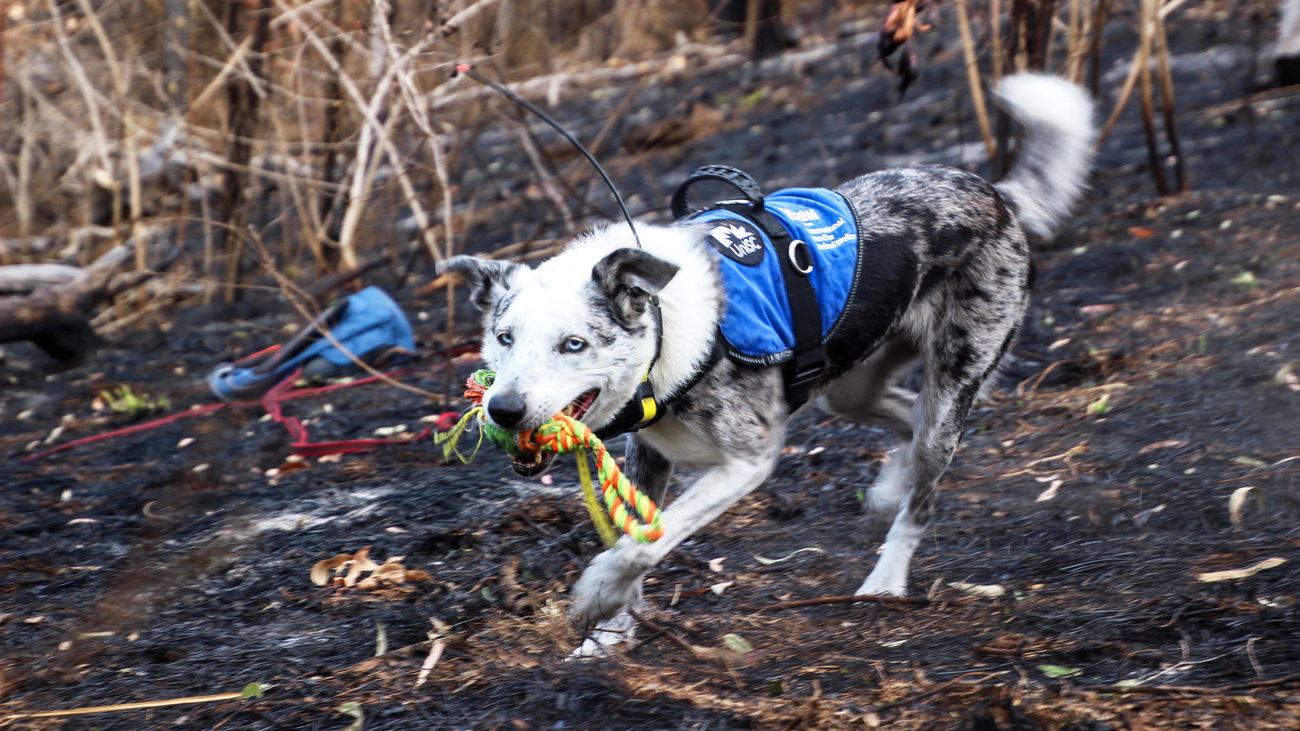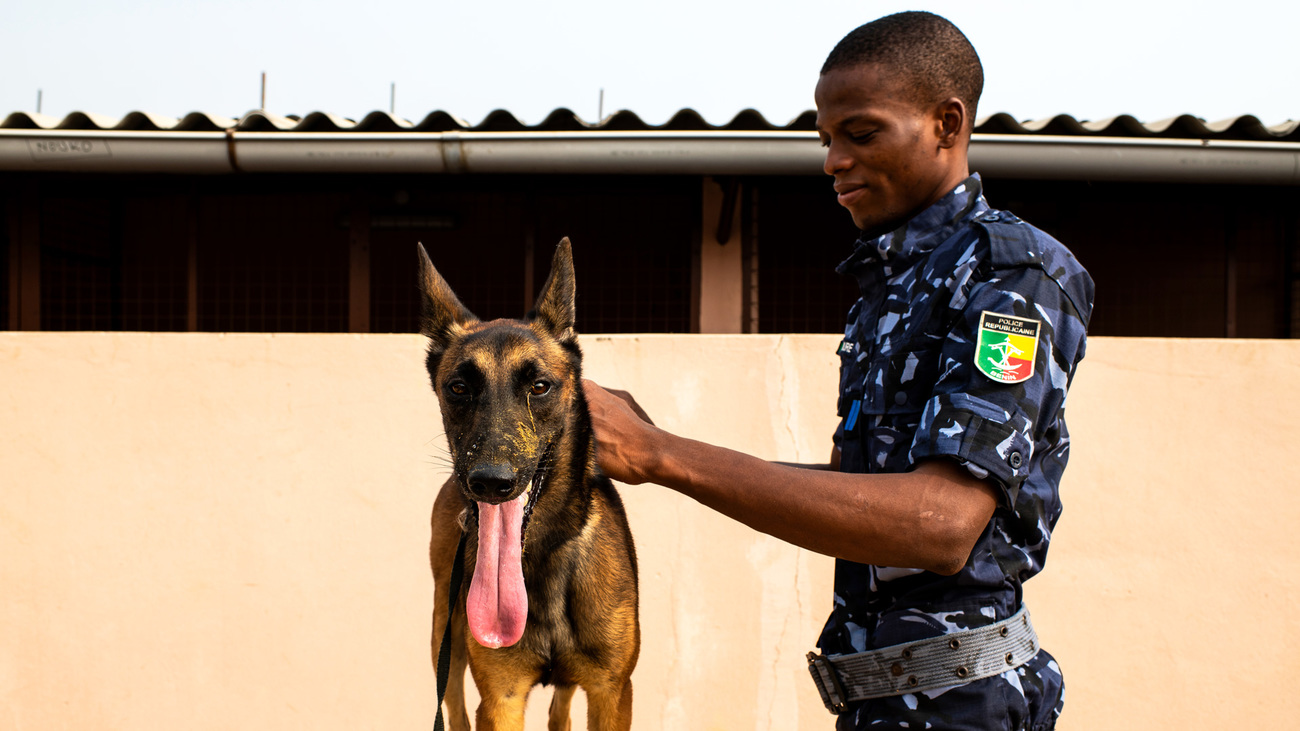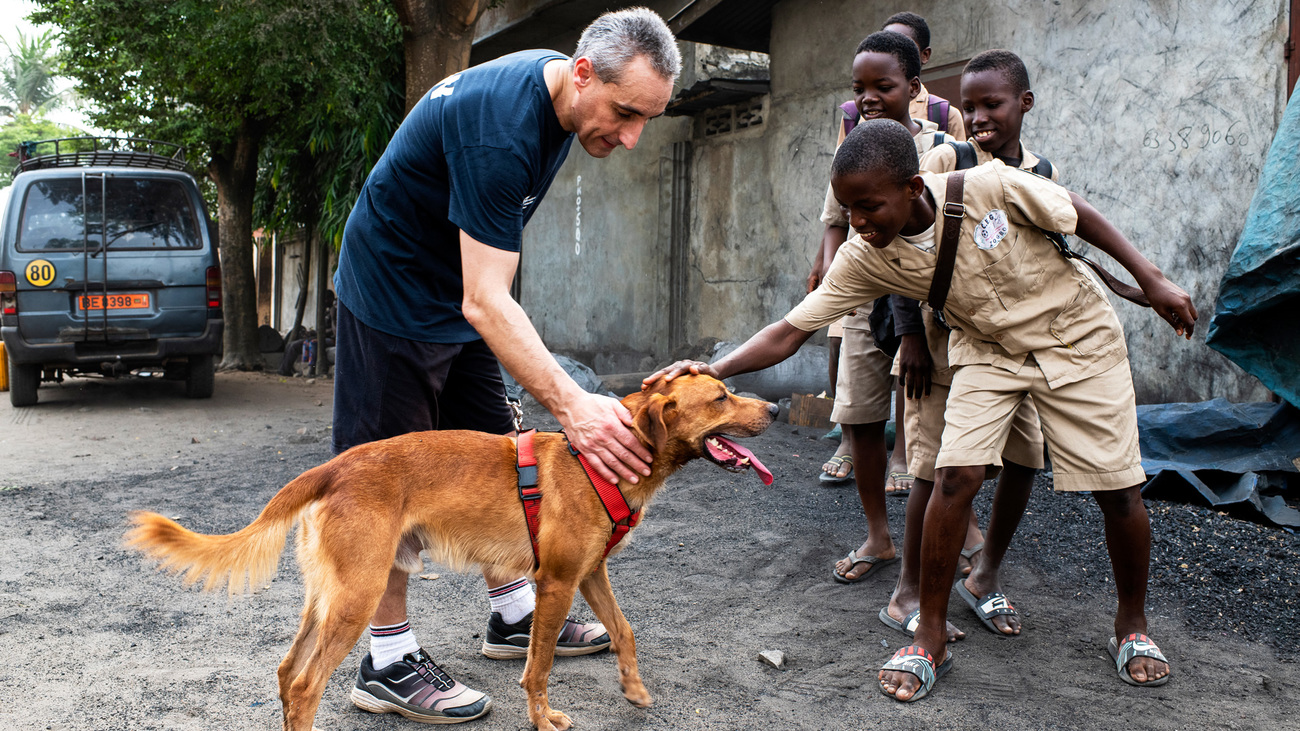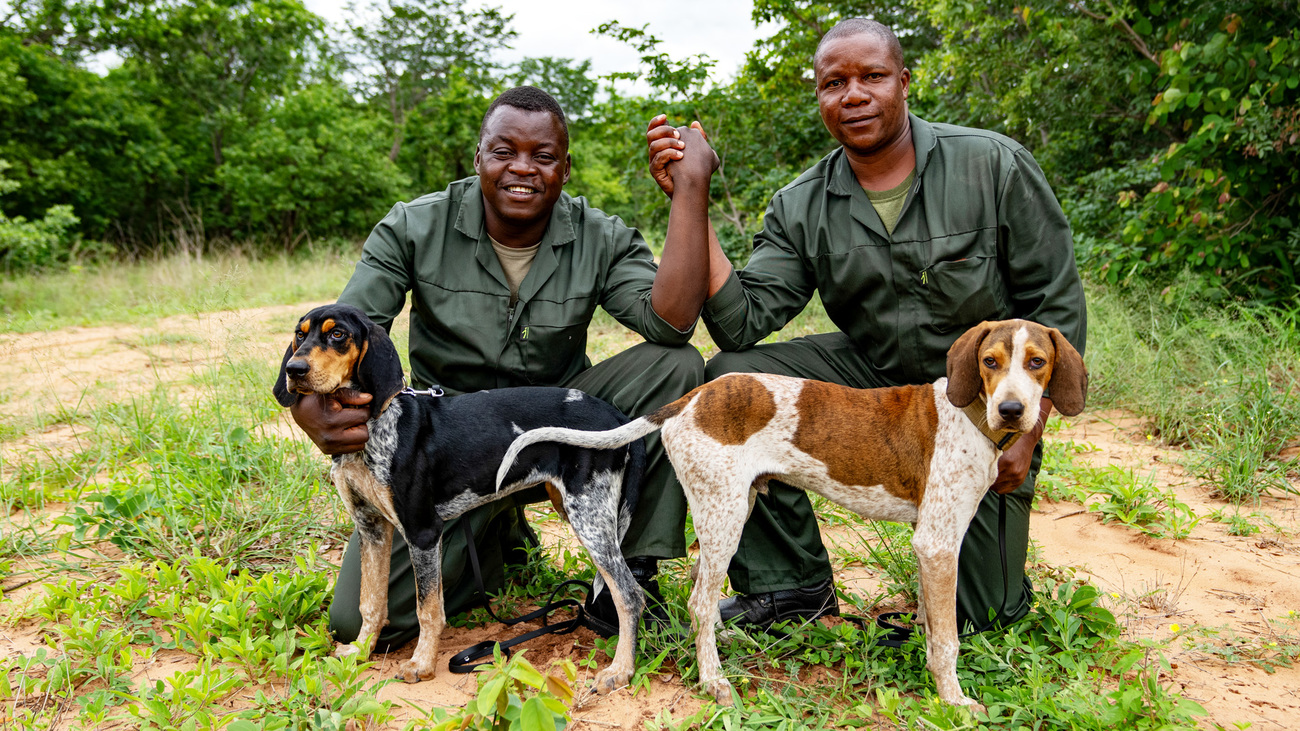Dogs
What is a dog?
Domestic dogs evolved from wolves—either grey wolves or another, now-extinct type of wolf—though there is some scientific debate about their exact origin. Genetics suggest that dogs broke off from their wild ancestors between 14,000 and 29,000 years ago and became domesticated through human interactions.
There are over 400 dog breeds, but every variation is a member of the same species, Canis lupus familiaris, and all are related to other wild canines, like foxes.
Dogs come in all shapes and sizes, ranging from huge Great Danes to tiny teacup Chihuahuas. Dog weights range wildly from 1.8 kilograms (4 pounds) for toy poodles to 104 kilograms (230 pounds) for the largest mastiffs.
Humans used simple forms of genetic engineering to breed dogs for specific instincts and characteristics, and the first domestic dogs were likely bred for hunting.
Today, many people keep pet dogs for companionship and comfort, though there are still many modern jobs for dogs, from providing services to individuals to sniffing out wildlife crime.
Unfortunately, feral dogs can wreak havoc in their local ecosystems, primarily by preying on native wildlife, leading to severe population declines.
What is a dog’s scientific name?
The scientific name for a dog is Canis lupus familiaris.
They are a domesticated subspecies of grey wolves (Canis lupus). There are over 400 distinct dog breeds, but they all fall within the same species.
Where do dogs live?
Dogs are now found all over the world. Their ancestors, grey wolves, were originally found throughout the northern hemisphere and were the world’s most widely distributed mammal at one point.
Evolution
The evolution of dogs from grey wolves occurred over thousands of years through a combination of natural selection and human influence.
Research shows that the first domesticated wolves occurred between 14,000 and 29,000 years ago. The exact timeline and details of this domestication process are still debated among scientists, as there were likely several unique instances of wolves being domesticated in different parts of the world at different times.
Around 20,000 to 40,000 years ago, it is believed that humans and grey wolves started developing a mutually beneficial relationship. Different packs of wolves, in different geographical areas, entered this relationship in different ways. For example, wolves in northern Eurasia likely had a hand in their own domestication by following around nomadic people and eating the remains of animals and other food scraps these people left behind.
Over time, a form of natural selection occurred. Wolves that were more tolerant of humans and were less aggressive would have been more likely to thrive in this new environment.
As wild animals, it’s unclear exactly how wolves became comfortable sharing space with humans. However, once they did, humans began to breed them, using simple forms of genetic engineering to breed for specific instincts and characteristics.
The first dogs were likely bred for hunting, herding livestock, working and towing sledges in the cold, and protection. For example, huskies were bred to withstand cold temperatures, German shepherds to herd livestock, and dachshunds for their ability to chase badgers into burrows.
As human societies developed and diversified, so did the roles assigned to dogs, and different breeds emerged based on specific needs and preferences. Selective breeding by humans further accentuated certain physical and behavioral traits, resulting in the wide variety of dog breeds we have today.
Dogs as pets
Over time, humans bred dogs to serve as companions rather than for working purposes. Nowadays, dogs are popular pets, and there are hundreds of different breeds.
Let’s examine the major dog breed groups and their characteristics.
- Sporting group: Bred to assist hunters in capturing and retrieving feathered game, these dogs often have thick, water-repellent coats. Sporting breeds include Labrador retrievers and cocker spaniels.
- Hound group: Bred to pursue warm-blooded, fast prey while hunting, these dogs are sleek, have long legs, and can run very fast for short bursts. Hound breeds include greyhounds and bloodhounds.
- Working group: These dogs developed to assist humans with daily tasks, like pulling sledges and guarding flocks or homes. Working breeds include Great Danes and rottweilers.
- Terrier group: Terriers were bred to hunt vermin and rodents underground. They are feisty and short-legged. Terrier breeds include Scottish terriers and bull terriers.
- Toy group: Toy dogs were bred for human companionship and are often small enough to fit in your lap. Popular toy breeds include pugs and Chihuahuas.
- Herding group: Herding dogs developed for moving livestock like sheep and cattle, with high energy and natural intelligence. Herding breeds include border collies and German shepherds.
- Non-sporting group: This group includes everything left over—the dog breeds that don’t fit into the other categories. Some non-sporting breeds include dalmatians and poodles.
Having a dog as a pet can provide many benefits, including reducing loneliness and stress, encouraging movement and exercise, and supporting socialization with other dog owners. Plus, having a dog at home has been shown to make you happier. Studies have shown that dogs can raise levels of oxytocin in humans.
Dogs with jobs
Many dogs today have jobs that range from being used therapeutically to helping law enforcement.
Some prominent, and important dog jobs include:
- Therapy dogs, who provide emotional support
- Search and rescue dogs for humans and animals—during the devastating 2020 Australian bushfires, dogs were used to locate animals that needed to be rescued from the fires.
- Medical dogs that can detect diseases, including Parkinson's, diabetes, epileptic seizures, and cancer, using their strong sense of smell
- Military and police dogs, who sniff out explosives and find people or evidence—dogs have also been used to stop wildlife crime by harnessing their tracking skills to detect trafficked animals or animal parts.
- Guide or support dogs for individuals with blindness and/or other needs
Disaster preparedness
Our pets rely on us every day for food, shelter, water, and plenty of belly rubs, but in times of emergency, they need our assistance even more.
To prepare your dog for a potential disaster you should do things like:
- Microchip them and keep your information up-to-date with the microchip database
- Get them vaccinated regularly
- Get them comfortable with being in a crate or carrier
It’s also a good idea to prepare a pet disaster kit, stocked with everything you may need in the case of an emergency. This should include:
- Enough food for two or more weeks
- Drinking water
- A photo of you with your dog
- A collar with an ID tag
- Medical records
- A dog crate or carrier
- Food and water bowls
- A lead and/or harness
- Any medication your dog needs
- If needed, a muzzle and/or other safety equipment
The threat dogs pose to wild animals
In some cases, dogs can pose a threat to wild animals, through predation, outcompeting wildlife for food, interbreeding, and spreading disease.
The Global Invasive Species Database notes that feral or wild dogs threaten nearly 200 IUCN Red List-assessed species.
One example includes dogs in the Serengeti-Mara ecosystem in East Africa, which can spread canine distemper virus (CDV) to wild animals, affecting silver-backed jackals, bat-eared foxes, and endangered African wild dogs.
A closely related virus, also spread by dogs, has also affected lions, hyenas, bat-eared foxes and leopards in the Maasai Mara National Reserve.
Feral domesticated dogs and pet dogs let off their leashes also pose a threat to wild animals. A New Zealand study found that just one German shepherd killed an estimated 500 native kiwi birds.
In most cases, when domesticated dogs are involved, it’s up to humans to mitigate these risks to prevent harm to endangered or threatened species. Keeping your dogs monitored and on leashes when they go outside is vital for protecting wild animals.
FAQs
Can dogs see colors?
Dogs can see some color, but not in the same way that humans do. Their vision is similar to humans with red-green color blindness because dogs only have blue and yellow cones in their eyes.

How often do dogs go into heat?
Female dogs go into heat—which means they are ready to reproduce—approximately every six months. It lasts about 18 to 21 days
Heat is made up of four distinct stages:
- Proestrus, which lasts up to nine days, is when a bloody discharge first appears in a female. In rare cases, this phase can last up to 28 days. Proestrus ends when the female accepts a male partner.
- Estrus is the period when the female is sexually receptive and ready to breed. Ovulation occurs 24 hours after the acceptance of the male. As ova survive for up to four days, a female dog can be impregnated by more than one male during this period.
- Diestrus comes after estrus when the female does not fall pregnant, a period which is characterised by a state of ‘pseudopregnancy’.
- Anestrus is the final and resting state.
How long are dogs pregnant?
On average, pregnancy in dogs lasts 63 days from conception to birth.
How many puppies can a dog have?
Dog litter sizes vary by breed. On average, dogs give birth to five or six puppies at once. Litters of between one and 12 puppies are considered within a normal range.
Why do dogs howl?
Just like the wolves from which they descend, dogs howl to communicate.
They might howl to get humans’ attention, communicate with other dogs, express emotions, out of discomfort and pain, or to respond to other noises.
Do dogs sweat?
Dogs do sweat, mainly through the pads of their paws. While humans sweat to cool down, dogs have other methods for regulating their body temperature. This includes panting, which causes moisture in the airways to evaporate and cool them down, and vasodilation, where blood vessels expand, moving warm blood to the body’s surface so it can be cooled.
How many teeth do dogs have?
Just like humans, dogs grow two sets of teeth in their lives: puppy teeth and adult teeth.
They begin by growing 28 puppy teeth, which start to come in when they’re three to four weeks old. Next, they grow 42 adult teeth, which begin to present between the ages of three to seven months.
When do dogs stop growing?
Dogs grow at different rates based on their breed and size.
Small dogs (up to nine kilograms or 20 pounds) take around 12 months to reach their full size.
Medium dogs, who are between nine and 22 kilograms (20-50 pounds), take around 15 months to reach their full size.
Large dogs, who weigh 22 to 45 kilograms (50 to 100 pounds), and extra large dogs over 45 kilograms (100 pounds) take 18 to 24 months to reach full size.

Why do dogs have whiskers?
Dogs use their whiskers to help guide them through their environment. Whiskers are highly sensitive and transmit sensory information to dogs’ brains. They can detect changes in air currents, which then gives dogs information about the size, shape, and speed of nearby objects.
Why do dogs lick humans?
Dogs lick humans for several reasons, including:
- Expressing themselves
- Grooming
- Bonding
- Getting the human’s attention
- Soothing themselves
- Showing empathy
- Because humans taste good to them
Our work
IFAW has partnered with organizations all around the globe to rescue and rehabilitate dogs impacted by disasters and conflict. Since the war in Ukraine broke out in 2022, IFAW has worked with partners in Ukraine to rescue animals impacted by the war and provide food, emergency medical treatment, and sheltering. One of our partners is the Step Up rehabilitation center, where dogs with war injuries receive medical care and physical therapy. We also provide grants to Nova Ukraine, a Ukrainian charity that supports animals in shelters and works with local rescue centers, including Animal Rescue Kharkiv. Through their work, more than 200 pets were reunited with their families, including after the Kakhovka dam destruction.
Similarly, following deadly earthquakes that struck Syria and Turkey in 2023, IFAW assisted in rebuilding animal shelters that cared for local dog and cat populations.
In addition, we’ve worked with communities in Playa del Carmen, Mexico, and local organization Coco’s Animal Welfare to build a clinic, stock it with supplies, and establish veterinary protocols. This project helped keep local dogs and cats safe and encouraged the adoption of more than 1,000 homeless animals. Getting these animals off the streets helps deter jaguars, which are wild predators in the area.
In the wake of Hurricane Maria in 2017, we sent over 2,000 pounds of dog and cat food to Dominica to help affected families and their pets. Our team also supported animal search and rescue efforts and emergency sheltering following the wildfires in Butte County, California, in 2020.
The Northern Dogs Project helps care for dogs in First Nations communities in rural Canada, where settlements live hours away from veterinary care and often have no other option but to cull dog populations. This project, created with local communities, offers veterinary services, culturally relevant education, and real-life solutions for those who would otherwise not have them.
We also have undertaken several projects that have trained detection dogs, including koala detection dogs in Australia, who help locate vulnerable animals, and dogs in Benin who were trained to sniff out wildlife crime and trafficking.

Video
How can you help?
Learning about dogs and how they interact with the natural world is important. Dogs may be one of the most common mammals on earth, but they still need our help—as do the natural habitats threatened by feral populations.
